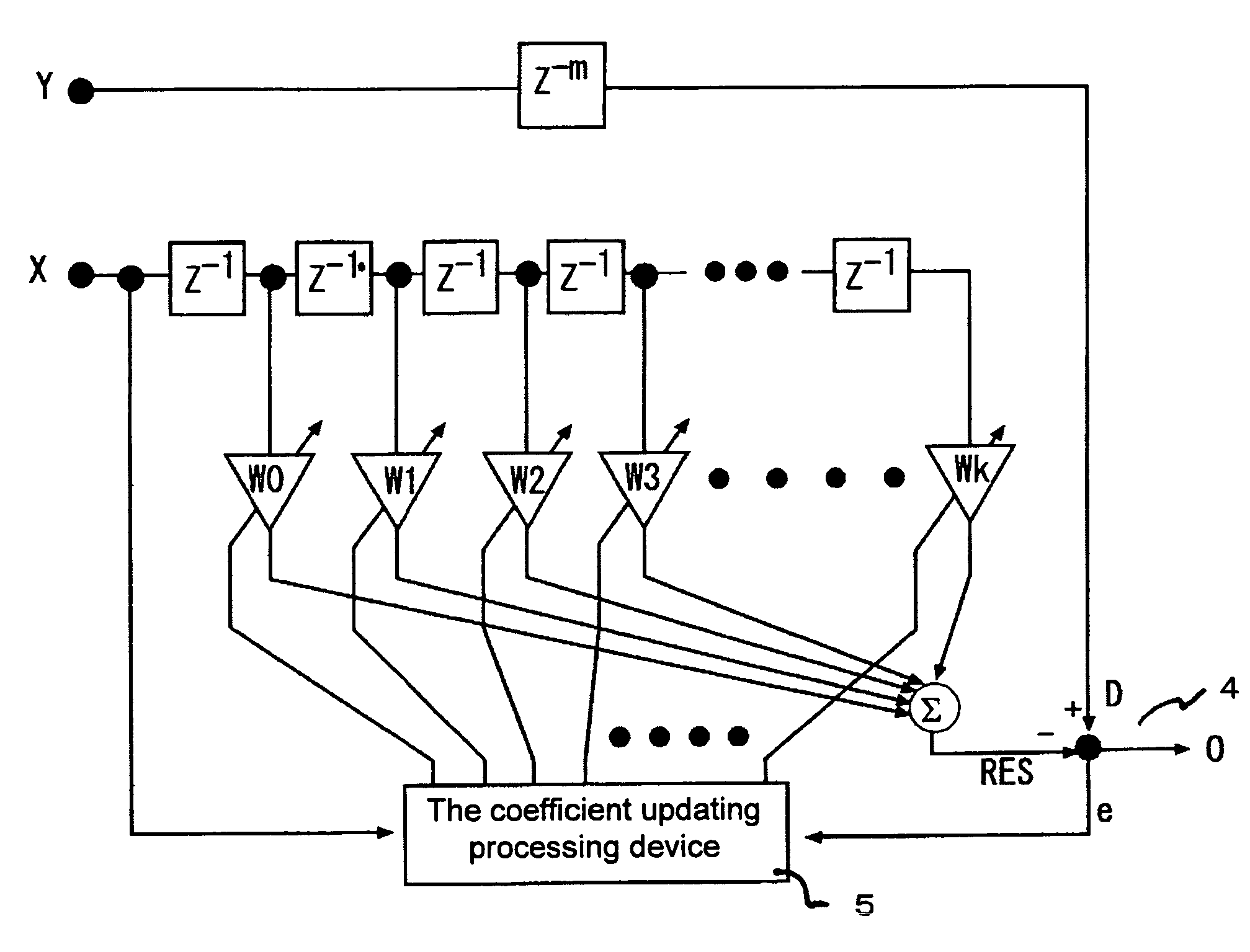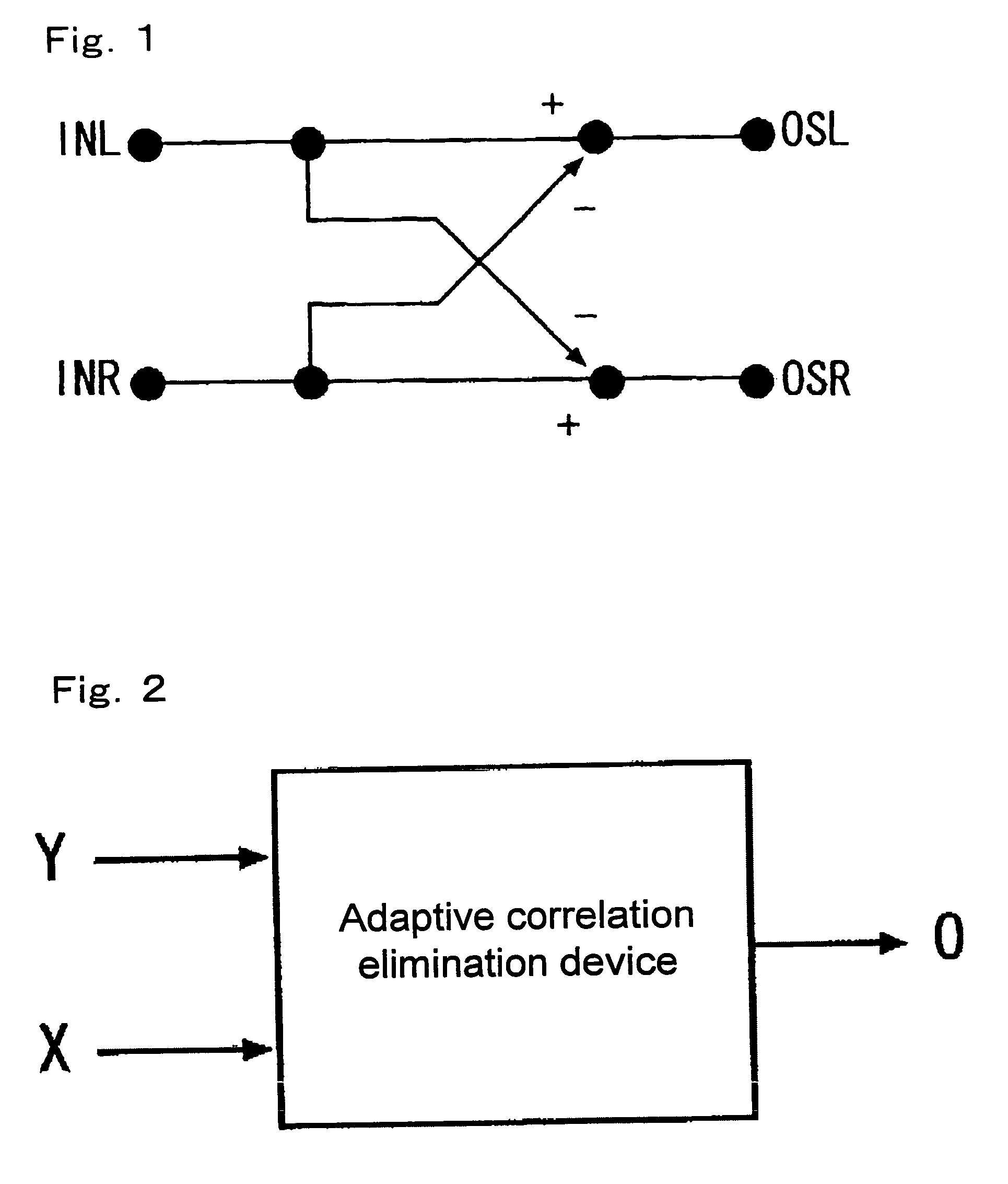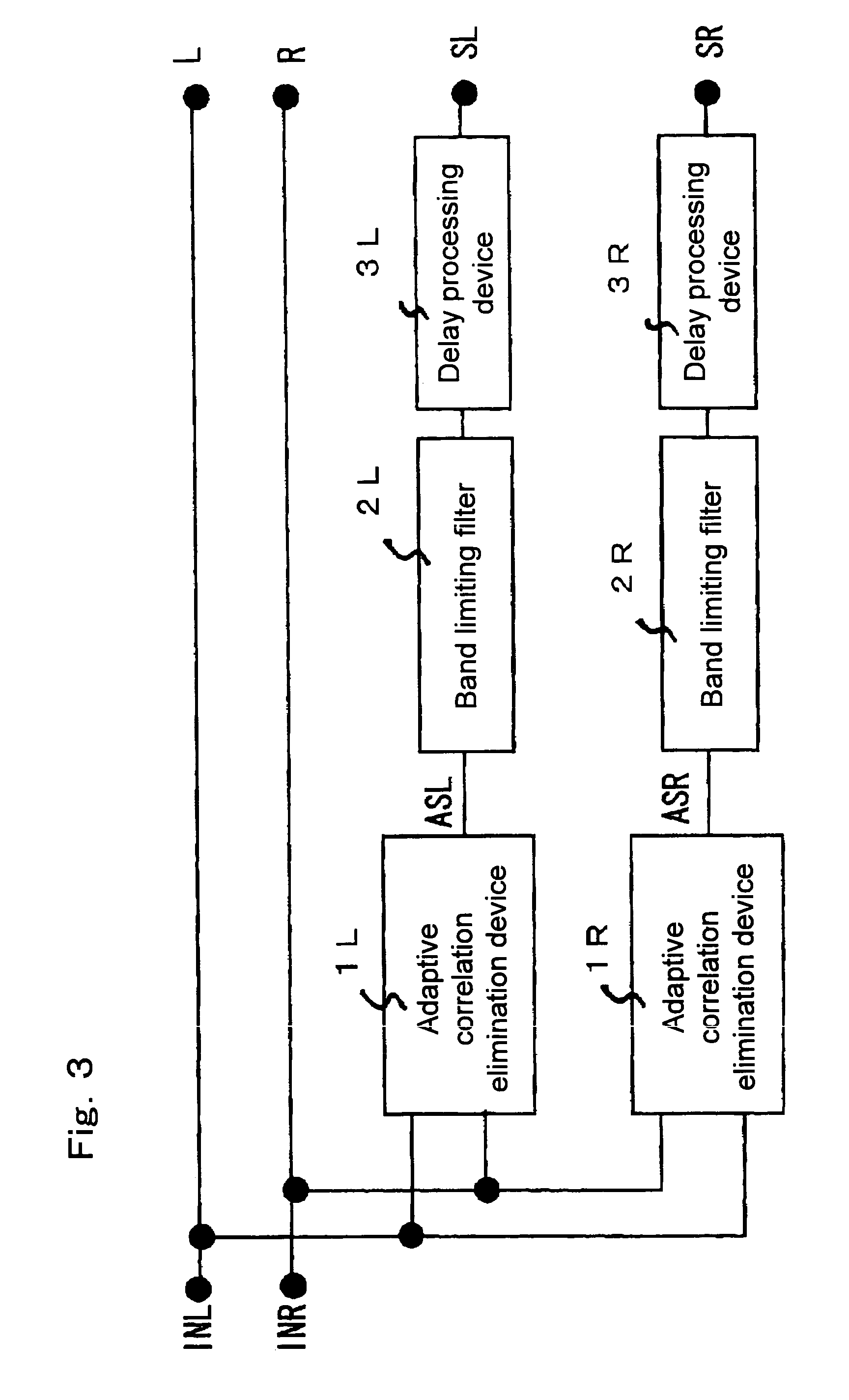Audio device and playback program for the same
a technology of audio devices and programs, applied in the field of audio devices and playback programs for the same, can solve the problems of disharmony, reversed phase and playback feeling, and the conventional technique of this type of phase manipulation cannot go beyond simple phase manipulation, so as to achieve the effect of greatly reducing the correlation between the input signals of the two channels
- Summary
- Abstract
- Description
- Claims
- Application Information
AI Technical Summary
Benefits of technology
Problems solved by technology
Method used
Image
Examples
Embodiment Construction
[0029]Embodiments of the present invention will be described below in concrete terms with reference to the attached figures. Furthermore, the present invention can be applied to all audio devices that produce surround signals from stereo signals of two channels, regardless of the number of channels produced. However, devices producing four-channel, five-channel and 5.1-channel signals will be described below. Furthermore, the filters and coefficient updating algorithms used in the description indicate examples of the present invention; the present invention is not limited to these filters and algorithms. Moreover, the signals that are produced are output “as is” or after being subjected to acoustic effects and signal processing such as reverberation effects, delay processing, down sampling or the like. However, the embodiments merely indicate examples; the present invention is not limited to these effects and processing.
Production of Four-Channel Signals
[0030]An embodiment in which ...
PUM
 Login to View More
Login to View More Abstract
Description
Claims
Application Information
 Login to View More
Login to View More - R&D
- Intellectual Property
- Life Sciences
- Materials
- Tech Scout
- Unparalleled Data Quality
- Higher Quality Content
- 60% Fewer Hallucinations
Browse by: Latest US Patents, China's latest patents, Technical Efficacy Thesaurus, Application Domain, Technology Topic, Popular Technical Reports.
© 2025 PatSnap. All rights reserved.Legal|Privacy policy|Modern Slavery Act Transparency Statement|Sitemap|About US| Contact US: help@patsnap.com



